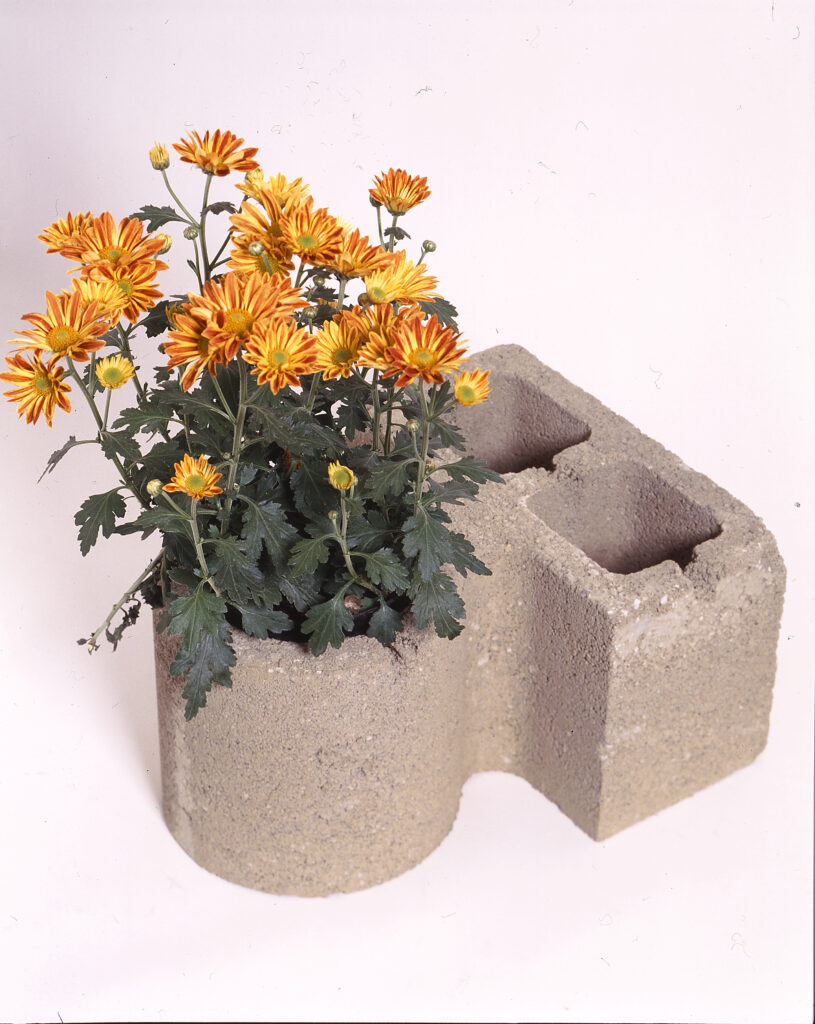

Housing built with the Sistema Arde blocks. © Hierve-Diseñeria
| Location | San Miguel de Allende, Mexico |
| Date | 1996–1998 |
| Client | Lomas de Moctezuma A.C., Pakal, Sindicato Nacional de Trabajadores de la Educación |
| Design Firm | Hierve-Diseñeria |
| Design Team | Pedro Martinez, Alejandro Villarreal |
| Manufacturer | Tandacasa |
| Modeling | Anima, Fernando Gutierrez |
| Cost | $17 per sq. ft./$178 per sq. m |
| Website | www.hierve.com |
Cheap and widely available, concrete masonry unit (CMU) block has become one of the most commonly used materials in low-income construction. With this in mind, Alejandro Villarreal and Pedro Martinez developed Sistema Arde, a patented building system that combines the ease of building with cement-block with the warmth and variety of traditional construction.
Like pieces of a jigsaw puzzle, each blocklike element is designed to solve a particular construction problem. For example, sewage lines, electrical systems, or other utilities can be run through specialized “chase” blocks. Blocks designed as key pieces simplify wall intersections and other connection points, while structural accessories such as planters and stair pieces combine to humanize the building’s façade and interiors.
Like pieces of a jigsaw puzzle, each blocklike element is designed to solve a particular construction problem. For example, sewage lines, electrical systems, or other utilities can be run through specialized “chase” blocks.

A planter block, one of the system’s “structural accessories.” © Hierve-Diseñeria
Blocks designed as key pieces simplify wall intersections and other connection points, while structural accessories such as planters and stair pieces combine to humanize the building’s façade and interiors.
There are three basic groups identified within the block system: “basic technology,” such as the inner walls, joists, and various other inner structural elements; “finished structural elements,” which form exterior load-bearing walls and create façades with a variety of finished masonry textures; and “structural accessories,” such as planters, windows, steps, closings, and decorative elements. The blocks have been used to construct a number of projects in San Miguel de Allende and other parts of Mexico.
















READ OR LEAVE A COMMENT